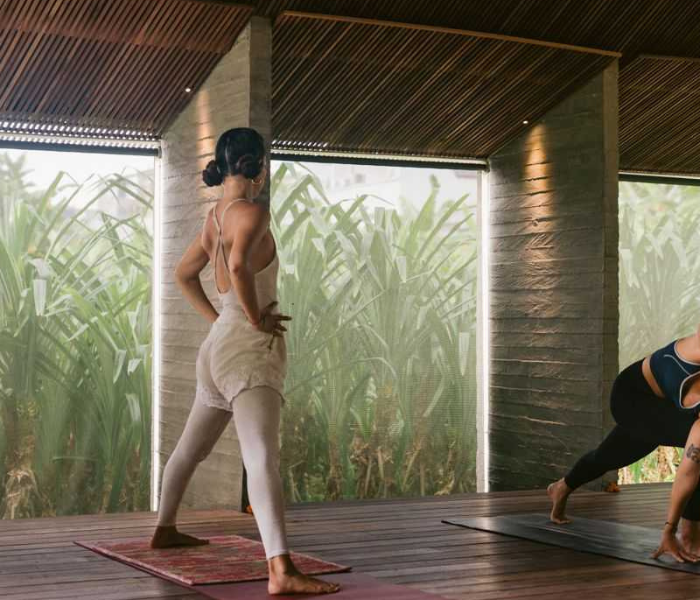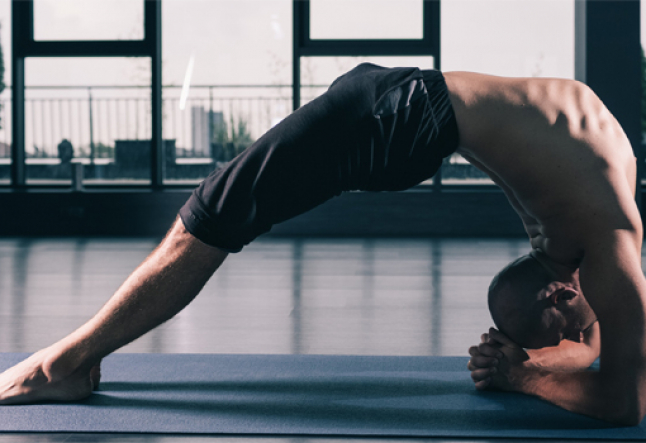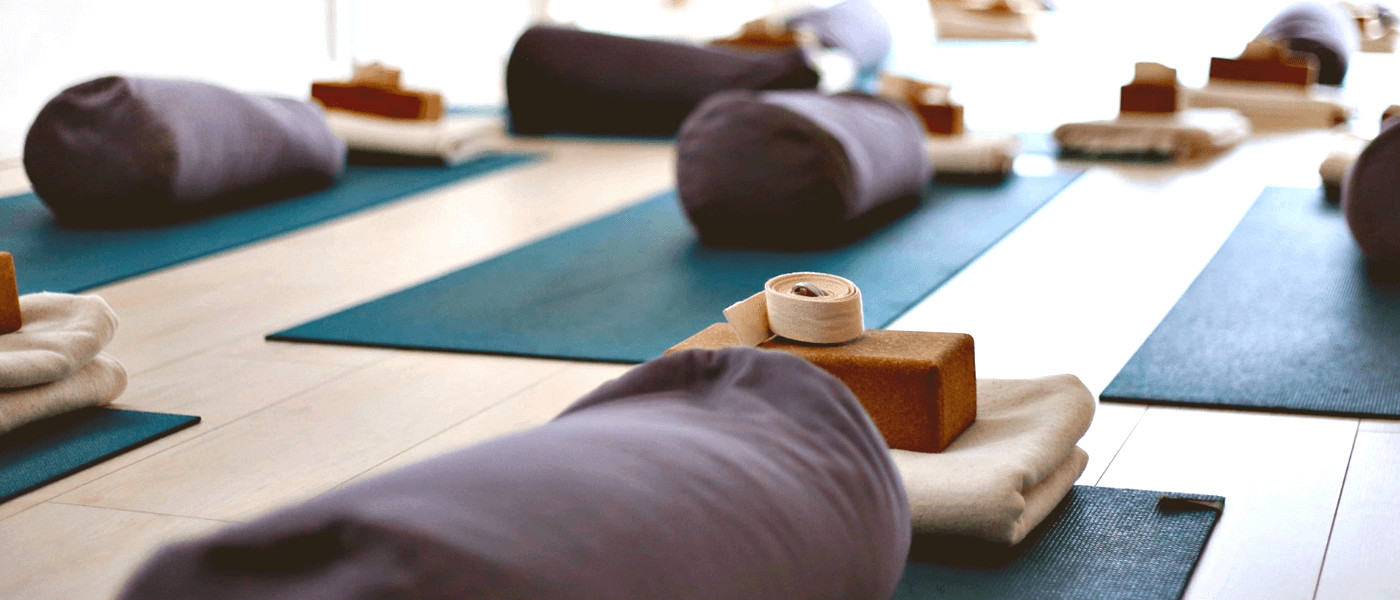13 Benefits of headstand: why standing upside down is good for your body & brain

Some see the yoga headstand as a powerful pose. Others see it as a risk not worth taking. Where do you stand in the great yoga headstand debate? Better yet—have you ever tried incorporating it into your own practice?
The famous yoga headstand has sparked conversation across the yoga and medical communities. Some organizations actively promote it, while others advise against it altogether. In some studios, teachers are forbidden from teaching the headstand, even to advanced students. In other traditions, it’s offered to beginners right away.
So, what’s the truth?
As a certified yoga teacher who has interviewed global experts and practiced headstands daily during my training, I’ve discovered that the benefits of headstand can be safely enjoyed—if approached correctly.
The ancient roots of headstand practice
The yoga headstand has been practiced for centuries—long before it gained popularity on Instagram. In traditional yogic practices, monks used headstands as a tool for spiritual awakening and physical rejuvenation.
Swami Sivananda, a renowned yogi and former medical doctor, praised the headstand as one of yoga’s top three health-enhancing postures. He regularly prescribed yoga—including headstands—as part of treatment plans for his patients.
But what makes this inversion so revered? Let’s explore the physical, mental, and spiritual benefits.
Top 13 benefits of headstands (backed by tradition and science)
Physical benefits of headstand
These benefits were emphasized in my Yoga Teacher Training and echoed by many yoga schools:
• Increases blood flow and oxygen to the brain, potentially improving focus
• Stimulates digestion and boosts metabolism by increasing “digestive fire” (agni)
• Improves circulation to the heart and strengthens cardiovascular function
• Enhances lymphatic drainage, which may support detoxification
• May help alleviate mild eye, ear, and nasal congestion
• Boosts reproductive health and hormone balance
• Promotes energy and combats fatigue
• Supports a youthful appearance and vitality
• Enhances core strength and posture control
Mental & spiritual benefits of headstand
Swami Sivananda once said that “lawyers, occultists, thinkers, and seekers benefit most from the headstand.” Here’s why:
• May improve memory and cognitive clarity
• Helps prepare the body and mind for deep meditation
• Encourages emotional balance and reduces stress
• Brightens intuitive or “psychic” awareness
• Enhances spiritual discipline when paired with mantra and breathwork
• Offers a literal new perspective—on your mat and in life
Is headstand right for you?
Not everyone needs to master a full headstand to benefit from it. Variations and supportive poses like Shoulder Stand (Sarvangasana) offer similar advantages with less risk, especially for beginners or those with medical concerns.
How to Prepare for a Safe Headstand
- Take it slow.
Swami Sivananda advised, “Be calm. Be cool. There is eternity before you.” Rushing into inversions can lead to injury. Slow, mindful progress builds the strength you need safely. - Practice on an empty stomach.
Wait 2–3 hours after eating before attempting any inversion. Your digestion will thank you. - Visualize success.
Before lifting into the pose, sit in Child’s Pose and picture yourself entering and exiting the posture with ease and control. - Warm up and strengthen.
Build neck, shoulder, and core strength with Dolphin Pose, Forearm Planks, and Downward Dog.
Gradually progress to variations like Tripod Headstand (Sirsasana II) using a wall.
How to do a traditional headstand (Sirsasana I)
• Lay down a folded blanket or yoga mat for head and forearm support
• Interlace your fingers and place your forearms on the mat shoulder-width apart
• Place the crown of your head on the mat, cradled by your hands
• Walk your feet toward your face until your hips stack over your shoulders
• Gently bring knees into the chest, engaging the core
• Once balanced, straighten the legs toward the ceiling
• Breathe deeply and steadily, holding for as long as it feels stable
• Exit slowly by reversing the steps and resting in Child’s Pose
Headstand safety tips: when to avoid the pose
Avoid or modify the pose if you have:
• Glaucoma or other eye conditions
• Unmedicated high blood pressure
• Neck injuries or spinal instability
• Vertigo or migraines
• You’re menstruating and prefer to skip inversions during this time
Always consult a qualified yoga instructor or healthcare provider if unsure.
Controversy or clarity: who’s right about headstands?
Both sides of the debate hold valid concerns. There’s no single answer for everyone. The real question is: What’s best for your body, your level, and your practice?
If you’re interested in exploring headstand safely, seek out a qualified teacher who demonstrates experience and confidence in teaching the pose—not just performing it.
Final thought: you don’t need a headstand to be a Yogi
Headstand isn’t the pinnacle of yoga—it’s just one of many tools. Whether or not it’s right for you, yoga offers countless ways to explore strength, clarity, and transformation.
FAQ Based on common searches
Q: What are the dangers of headstands?
A: Injuries can occur if performed without preparation—especially to the neck or eyes. Always practice with supervision if you’re new.
Q: Can headstands help with anxiety or stress?
A: Anecdotal and preliminary research suggests that inversions may lower cortisol (the stress hormone), improving mood and mental clarity.
Q: How long should you hold a headstand?
A: Beginners may start with 10–30 seconds. As strength and comfort increase, you can build up to 3 minutes—always without strain.
What’s Your Experience With Headstands?
Have you tried it? Would you? Share your story in the comments and let’s turn this conversation upside down—together.




